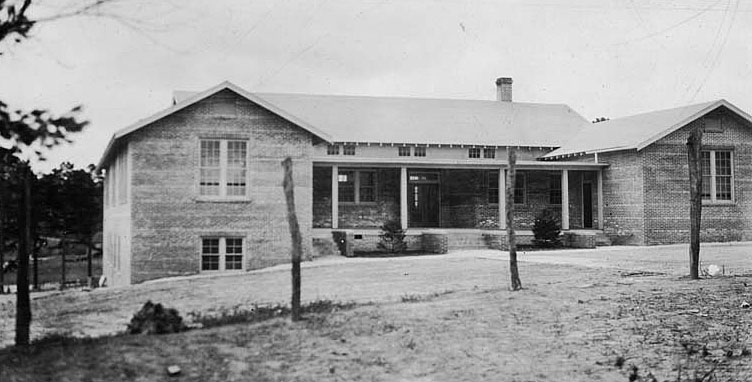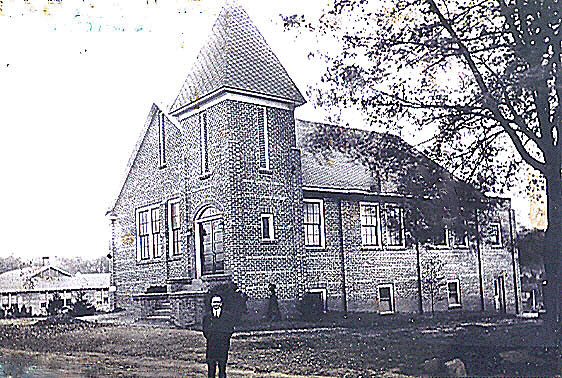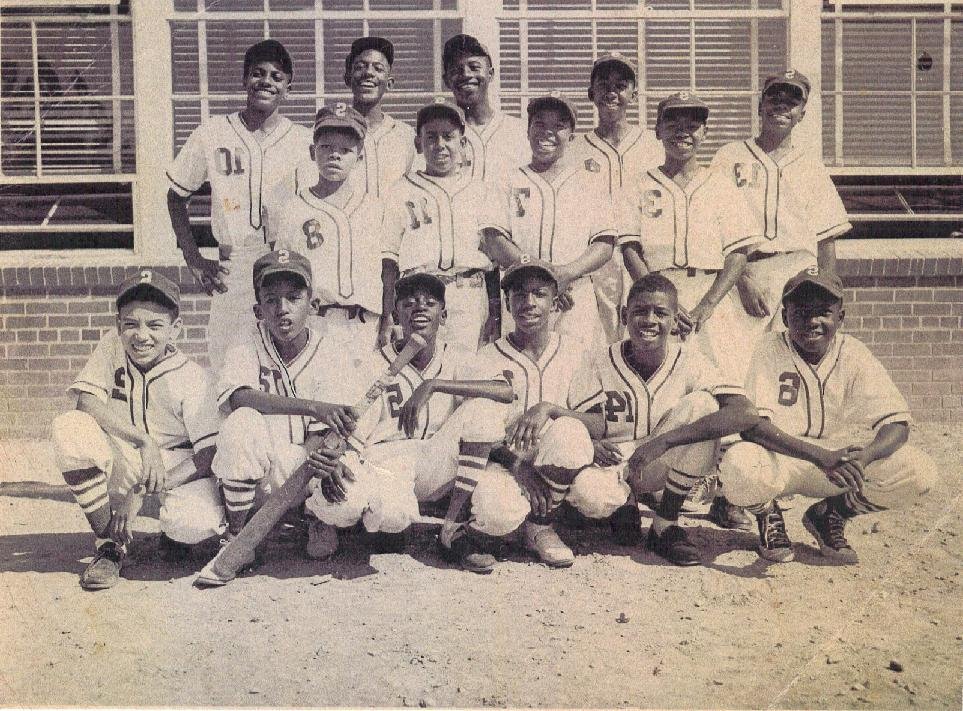Introduction
Shiloh is a biblical name that denotes the Messiah or the Peaceful One.
After the Civil War, African American freedmen settled on a small parcel of land now part of the Biltmore Estate. They called their community Shiloh. When George Vanderbilt purchased the Estate property, which included the Shiloh area, his agent, Charles McNamee, and Rev. Billy Logan, a Shiloh resident, helped relocate the people, their church, and their graveyard to the current Shiloh community in South Asheville. Shiloh residents refer to the original community as Old Shiloh and the new location as New Shiloh. New Shiloh has been continuously inhabited since 1889.
New Shiloh was initially defined as a community between Hendersonville and Sweeten Creek Roads, bounded north by what is now I-40 and south by Rock Hill Road. Two neighborhoods, Rock Hill and Petersburg, opposite Sweeten Creek Road, were small established communities when the people from Old Shiloh moved to their current location. Brooklyn, another small neighborhood in the Shiloh vicinity, was dismantled when I-40 was built through it. Many consider these areas to be part of Shiloh.
New Shiloh began as a small rural area with dirt roads and small family farms. The earliest residents lived along West Chapel Road, White Avenue, Shiloh Road, and Brooklyn Road. In the early years, Shiloh was a segregated, self-sustaining area. The residents lived off the land and established small, local mom-and-pop businesses.
New Shiloh evolved and prospered around vital community foundations: churches, schools, and people.
Click photo to see more.
The Churches
The churches in Shiloh have long served as essential institutions to the community's heritage and development. Three of the earliest churches are of special note: Shiloh A.M.E. Zion Church, Rock Hill Missionary Baptist Church, and Brooklyn Mission Fire Baptized Church. These three churches in different parts of the community continue to be integral to the neighborhood's spiritual, cultural, and social fabric.
The original Shiloh A.M.E. Zion Church was established in Old Shiloh in the mid-1870s. The Church has been active since moving to New Shiloh in 1889. In December 2022, the U.S. Department of the Interior listed it on the National Register of Historic Places.
In the late 1880s, Rock Hill Missionary Baptist Church established its congregation in a small log building on Rock Hill Road. In 1925, Rock Hill Baptist relocated to the Shiloh community on Caribou Road, known then as Possum Ridge. In the early fifties, the church moved across the road to its current location.
Brooklyn Mission Fire Baptized Church was located on Brooklyn Road in 1923 on property deeded to church trustees by Major Henry and his wife, Dixie. This church continues to be active in its original building.
The Schools
Shiloh residents always valued education. In Old Shiloh, children went to school in the community’s AME Zion Church. When the people moved to New Shiloh, they continued to educate children in the church until they built a one-room school. That school was too small, so the people petitioned the County Board of Education for a new school.
Shiloh Elementary School, 1928 -1971
After years of requests for a new school, the Buncombe County School Board finally awarded a contract to Lucius Williams, a local Black builder, to build a school in the Shiloh District. The school was constructed using a grant from the Rosenwald Fund. The Rosenwald Community Schools program, conceived in 1910 by Black educator Booker T. Washington and philanthropist Julius Rosenwald, president of Sears, Roebuck and Company, was a major program to improve black rural schooling in the segregated South. The Shiloh Elementary Rosenwald School, built in 1927, was one of over 5,000 Rosenwald buildings that blanketed fifteen southern states. A provision of the Rosenwald Fund required that community members match their grant. Shiloh residents met this requirement by engaging in a variety of fundraising activities. The people of Shiloh took immense pride in their school. It was a crowning jewel in the neighborhood. In 1952, the Buncombe County school system built an addition to the rear of the existing school. The addition included four classrooms and an auditorium.
Shiloh Elementary educated students in grades 1-8 from Shiloh, Brooklyn, Petersburg, Rock Hill, and the more distant communities of Arden, Fletcher, and Weaverville. The school was a meeting place for local clubs, athletic events, and theater productions. In the segregated society of the time, African American residents relied on the school as their social and cultural center. In the late 1960s and early 1970s, during the era of desegregation, most African American schools in Buncombe County and Asheville were closed, and African American students enrolled in previously all white schools. A decade after the school closed, the city demolished and replaced the original Rosenwald building with the Shiloh Recreation Center. The 1952 addition was not demolished and remained a part of the Center. In July 2006, by declaration of the Asheville City Council, the Shiloh Recreation Center was renamed the Linwood Crump Shiloh Recreation Complex to honor Mr. Crump (1944-2005), a strong community activist and advocate for neighborhood children. Affectionately known as the “Mayor of Shiloh,” Linwood was an outspoken voice for the community and never shied away from taking community issues to City Hall. True to its roots, the Complex is a focal point of the community. It provides after-school and summer youth programs and activities for senior citizens. It is also a gathering place for social activities and organizations.
The People
In the early years, most Shiloh residents were engaged in various types of employment, from domestic and custodial work to teaching and dentistry. Many residents worked in Biltmore Forest or were laborers on the Biltmore Estate. Still, others developed professions that served the community, including teaching, midwifery, serving as pastors, and storekeeping. The people developed a strong sense of community cohesiveness and made special efforts to give time and support to activities for neighborhood children. Scouting, sports, and church clubs were popular youth activities from the late 1940s through the 1970s. A prominent organization in those years was the Community League, led by William White, Lawrence Wilson, Clyde Ray, and other civic-minded individuals interested in promoting community improvements. The League was a forerunner of the present-day Shiloh Community Association. In the late forties, League trustees purchased property on the corner of Hampton and Century Roads. They erected a small building as a gathering place for meetings, games, and other neighborhood events. The League sponsored a baseball team and used the building as a concession stand when the team played games on the school grounds. After several decades of use, the building was demolished. Still, the League owned the property until 2005, when the sole surviving trustee, Lawrence Wilson, donated the land to the Shiloh Community Association for a community garden.
The sense of community remains strong in Shiloh. In recent years, residents have become increasingly concerned about growing commercial development and gentrification, fearing the community's residential single-family environment is threatened.
Shiloh Community Plan 2025
In 2002, the Shiloh Community Association partnered with Neighborhood Housing and the City of Asheville to develop a blueprint for the neighborhood's evolution for years to come. The plan addresses concerns about the quality of life in the neighborhood and efforts to ensure that the community remains intact for future generations. The Asheville City Council adopted the plan as an addendum to the City’s official comprehensive plan on September 14, 2010.
Shiloh history by Anita White-Carter.
Resources
Asheville City Directory. 1900 -1970.
Boyle, John. African American community on Biltmore Estate before Vanderbilts? (Interview with Bill Alexander, landscape historian at the Biltmore Estate). Asheville Citizen Times. 23 August 2017:2A
Billings, Lynne. Neighborhood Profile: Shiloh Community – Residents Love Close-Knit Neighborhood. Asheville Citizen Times. 17 February 2002:H1
Buncombe County Schools. Board Minutes 1920-1979 (Various references to Shiloh School)
Richardson, Sandree. Shiloh Embraces Past. Asheville Citizen Times. 8 February 2006: A1.
Rock Hill Missionary Baptist Church. 2004 Directory [and history]. Rev. Spencer E. Hardaway, Pastor.
Rosenwald Schools. Fisk University Database. http://rosenwald.fisk.edu/
Self-Study Report of Shiloh School Elementary School. Buncombe County Schools. Asheville, NC. March 1963. (UNCA Special Collections)
Shiloh A.M.E. Zion Church: One Hundred Sixteenth Anniversary (booklet). September 2, 1990. Rev. Herbert Grant, Pastor.
Shiloh Community Plan 2025. A Partnership of the Shiloh Community Association, Neighborhood Housing and the City of Asheville. https://www.ashevillenc.gov/civicax/filebank/blobdload.aspx?BlobID=23468
Terrell, Bob. The Two Shilohs (Interview with Annie Logan Owens). Asheville Citizen Times. Circa 1960.
Waters, Darren. Life Beneath the Veneer: The Black Community in Asheville, North Carolina from 1793 to 1900. Chapel Hill, 2012. PhD. Dissertation. Pages 109, 126-127.
https://cdr.lib.unc.edu/concern/dissertations/0g354f63m
Interviews:
Alexander, Bill, Biltmore Estate Landscape Historian, Phone Interview with Anita White-Carter, 20 Jan. 2015
Wilson, Lawrence, Personal Interview with Anita White-Carter, 11 Aug. 2006.





